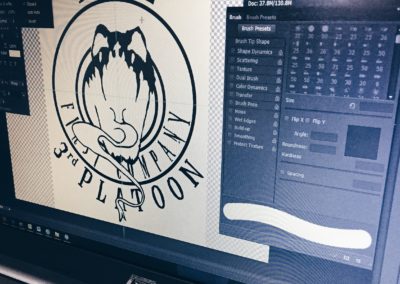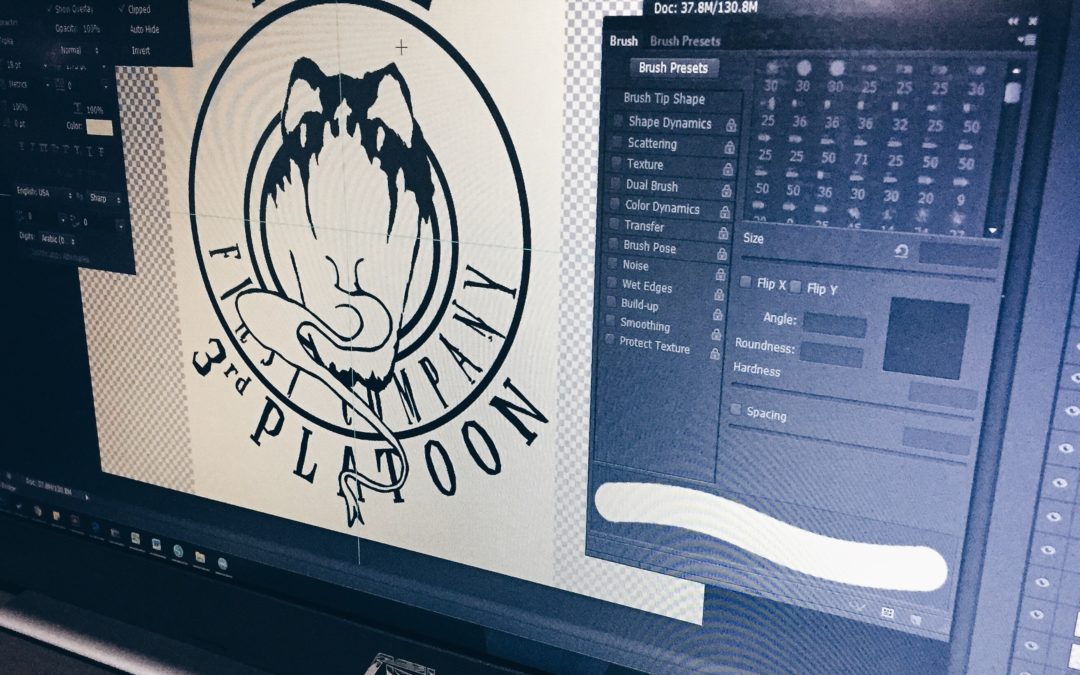-

10 Pro Tips For Better T Shirt Printing designs Featured Image
-

10 Pro Tips For Better T Shirt Printing designs Featured Image
01. Take your time and explore your concept
For T-shirt printing designs you need to sketch it out, go for a walk, create a few variations, have something to eat, do a full brainstorming process. Then sleep on it. And do it over again. If it comes to you straight away, great. But explore other options just in case, before thinking about your final design to be printed on a t shirt.
02. Imagine the design on a shirt
Having worked on both t shirt printing and design over the years. I know the vast difference between design on screen and a printed piece of t shirt. Don’t be afraid to mock it up on a photo of a model, print it out on an actual t shirt if necessary, or a cut out and place it on a t shirt to help visualize it better, and of course create your artwork at actual size onto the t shirt

03. Detail is king but keep things simple
Everyone appreciates great drawing ability and attention to detail. There is nothing better than seeing a really well executed masterpiece on a t shirt, that you can study for hours.
But equally, some of the most classic designs have been the simplest and get the message across through their simplest form. Anywhere in the middle and you may struggle to deliver a successful design.
04. Consider your market
Are you designing for male or female, young or old? At the end of the day you’re designing a product that you want people to wear. Like a good marketeer would do, write down the exact person you want to attract to your design – who they are, what they like, what other brands they like and go from there.

05. Keep your humour subtle
If you’re going for a humorous designs you don’t want it coming across as a cheap and low-cost joke shirt. Even the most successful loud and in your face designs have subtle humour.
I’m generally not a fan of 99 per cent of humorous t shirts, but done correctly it can turn heads! I’m digging Brad McGinty’s designs at the moment because he has a good balance.
06. All about colour!
Use the T-shirt colour effectively and try choosing complementary colours. If you’re using Adobe Illustrator, turn on Global Colours. It’s an absolute life saver and will save you so much time. You can also use Halftones to make the most of the restricted colours you’re allowed to use.
07. Prepare your artwork properly
Use Pantone Colours when t shirt printing, the printers will love you for it. They’ll also love you if you outline text and expand any strokes you may have. There are plenty of good tutorials out there depending on whether you’re using Illustrator or Photoshop.

08. Source a good printer for your T-Shirt Printing Designs
So your design is finished and properly artworked, but your t shirt will only be as ever as good your printer. You can give a shout over to a reputable company your local screenprinter t shirt printing company a call. But it’s important to take time to learn about what type of t shirt you want to print on.
The weight, the sizes, the labeling options, cost, etc, all affect the end product of the t shirt. This takes a while and will require speaking to various companies, but one thing is for certain… deal with a company who wants to treat your t shirts as an end retail product and will handle your work with care. t shirt printing is an art.
09. Get Educated
To have a good understanding of anything, you need to study it and understand it’s context. t shirts have come out of every subculture phenomenon that has ever existed whether it’s t shirts from bands, skateboarders, street art, sports crossovers or general pop culture.
10. Be ahead of the game
Be inspired by what the latest trends are but don’t copy them. Chances are by the time you have seen that T-shirt produced, other designers are moving on to something else behind closed doors.


